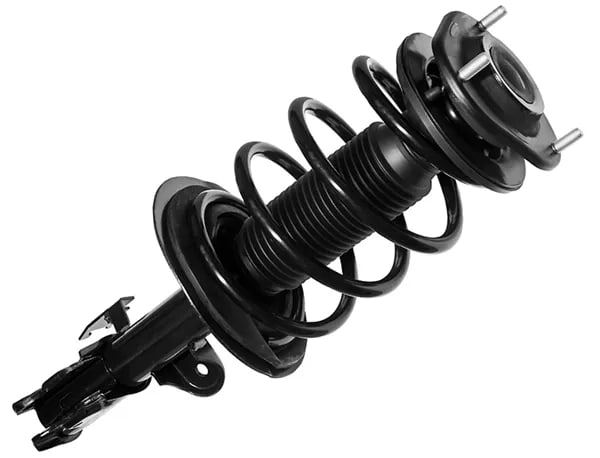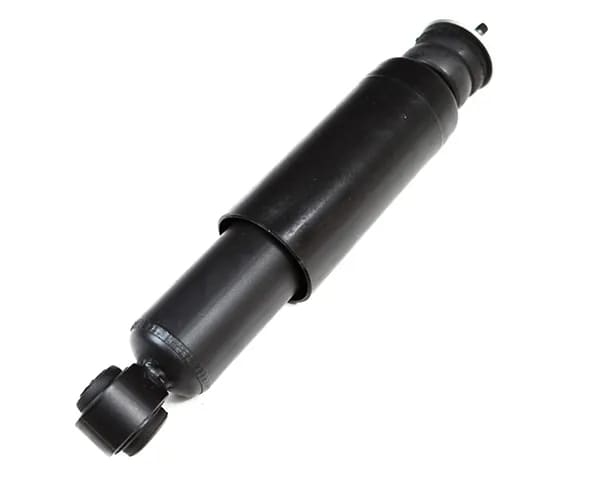What Is a Differential?
What is a differential? Read our guide on the importance of this car component and how to get automotive training at UTI!
The suspension system is an important part of a vehicle that helps improve handling by maximizing the friction between the tires and the road.
There are many different parts that make up the suspension system, and each plays a role in keeping the car in control and smoothing out the ride. Shocks and struts are two components that should be kept in good condition to ensure your suspension is working effectively.
Keep reading to learn more about the differences between shocks vs. struts, what they do within your car’s suspension system and how to know when to replace them.
Struts are considered a structural part of the suspension system. They are typically used on front-wheel-drive vehicles, although they can sometimes be used on rear-wheel-drive vehicles.
A strut combines several suspension components into one assembly. The parts incorporated include shock absorbers and coil springs. The strut body connects to a steering knuckle attached to a lower control arm and ball joint, and struts replace the upper control arm.

Struts help dampen the movements of coil springs, which are used to support the weight of a vehicle and keep it handling properly over bumps, hills and other imperfections in the road. Along with helping improve control of the car, struts help the springs support vehicle weight.
Also known as shock absorbers, shocks are parts that help control the rebound movement and impact of the springs and suspension on a vehicle. They are also responsible for ensuring the tires remain in contact with the surface of the road.
Shocks control the springs and suspension by turning kinetic energy into thermal energy that’s dissipated through hydraulic fluid. Key components of the shock absorber that help with this process include a piston, coil and hydraulic fluid.

When a car’s suspension is moving, hydraulic fluid is forced through holes in the piston. Only a small amount is let through, which slows the piston, affecting the movement of the springs and suspension.
The faster a suspension moves, the more resistance a shock absorber has. The effects include a reduced rate of bouncing on the road, swaying and brake diving.
You may have heard the terms strut and shock used interchangeably and maybe have asked yourself, “Are shocks and struts the same thing?” It’s important to note that they are completely different parts. While they both have similar jobs of dampening the movement of suspension components to help a vehicle maintain control on the road, they cannot be used interchangeably.
The main difference between the two lies in the fact that struts are a structural part of a vehicle’s suspension, while shocks are not. Many vehicles have shocks on one axle and struts on another, depending on what kind of suspension is present. While this is the case, not all vehicles have struts and may use separate springs and shocks in place of them.
You can tell whether your vehicle has struts or shocks by inspecting them, checking your owner’s manual or asking a trained automotive technician (who can also tell you if they need to be replaced soon).
As discussed above, shocks and struts play crucial roles in a car’s suspension system by contributing to ride comfort, handling and overall vehicle safety. Some of the main functions of car shocks include:
The main functions of struts include:
If you’re wondering how often shocks and struts should be replaced in a car, a general rule of thumb is to replace your shocks or struts between 50,000 and 100,000 miles. This can vary based on several factors, including the type of roads you regularly drive on.
These components will wear down over time, which means you might not notice any issues right away. However, there are some things you can be on the lookout for:
Taking your vehicle to a trained auto tech can help you identify the source of any problems and allow you to replace your shocks or struts if needed!
It is possible to upgrade car shocks or struts to help enhance the performance of the vehicle and this is a relatively common practice for those looking to improve their ride quality or handling.
Performance shocks exist that can provide superior dampening performance, such as monotube and twin-tube shocks. Coilover kits combine shocks and springs into a single unit which can allow for ride height and dampening adjustments.
Adjustable struts allow a car owner to tweak the dampening force depending on different driving conditions and preferences, and air suspension systems allow drivers to adjust ride height and stiffness as they go.
It’s important to make sure upgraded parts are compatible with your vehicle’s make, model and year if you decide to invest in them. It also helps to know how to install these components yourself or take them to a professional auto tech who does!
If you’d like to train for a hands-on career as an automotive technician, the Automotive Technology program at Universal Technical Institute (UTI) can help prepare you for the industry.1 You can learn skills in interactive labs that could be applied to an entry-level position.18
Courses cover a range of topics, including some instruction on how to service different parts of the suspension system. You’ll learn about the parts of a suspension system, how to use hand tools for assembly and disassembly and how to use alignment equipment.
Not only will your education benefit you in your career journey, but you could also gain the knowledge and tools required to make repairs on your own vehicle! The program is designed to be completed in just 51 weeks.7Request more information today!
Universal Technical Institute of Illinois, Inc. is approved by the Division of Private Business and Vocational Schools of the Illinois Board of Higher Education.